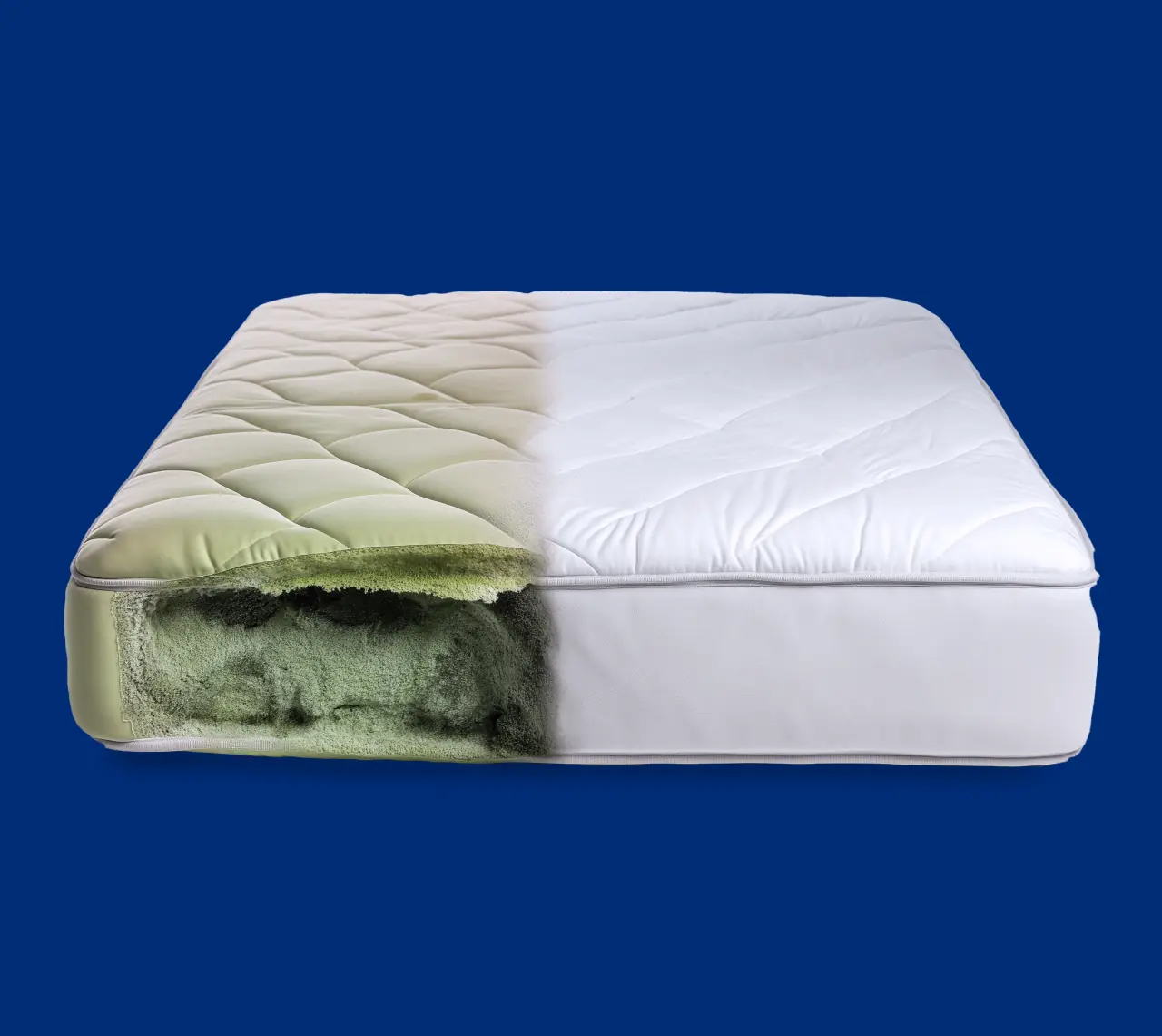To provide services at the highest level, we use cookies. Using the website requires you to choose settings related to their storage on your device. If you want to know what each type of cookie is used for, click the Details button below.
Why does a mattress mold and how to prevent it?20 kwietnia 2025 |

Mold on a mattress appears mainly due to excessive moisture and lack of proper ventilation. During sleep, the human body releases between 200 ml and 500 ml of sweat, which penetrates the mattress. If the mattress cannot "breathe", the moisture does not evaporate and creates the perfect environment for mold growth. Especially vulnerable are mattresses with low air permeability, such as those with visco foam as the top layer, but also latex mattresses and those containing wool or coconut fiber.
If mold has only appeared on the surface of the mattress, you can try removing it with home methods. However, if the mold has penetrated deep into the mattress structure, the safest solution is to replace it. Mold can be harmful to health, particularly for people with allergies or respiratory conditions.
To prevent mold in a mattress, choose a product with high air permeability, such as the Osaka Air mattress. Don?t place your mattress directly on the floor ? and if you prefer sleeping that way, stand it upright daily to air it out. Always use the mattress on a slatted frame that ensures proper airflow. Regularly ventilate both your bedroom and mattress. If needed, use anti-allergenic and anti-mold covers that can be washed at high temperatures.
To get rid of moisture, regularly air out the bedroom and the mattress itself ? remove bedding to let it breathe. Every few months, rotate the mattress 180 degrees to avoid moisture accumulating in one spot. Baking soda can also help: sprinkle it over the mattress, leave it for a few hours, and then vacuum. Baking soda absorbs moisture and neutralizes odors. In humid spaces, it?s worth using a dehumidifier to maintain proper humidity levels.
A simple home method for removing mold involves using vinegar and water. Mix them in a 1:1 ratio and spray the affected areas. Let it sit for 15?20 minutes, then wipe with a damp cloth and dry the mattress thoroughly. Another method is to clean the mattress with baking soda. Make a paste of baking soda and water, apply it to mold spots, leave it for an hour, then vacuum. A third method involves wiping the mold with isopropyl alcohol diluted with water, followed by drying. If the mold has penetrated deep into the mattress, consider professional cleaning services or replacing the mattress. Remember: each of these methods can potentially damage your mattress.